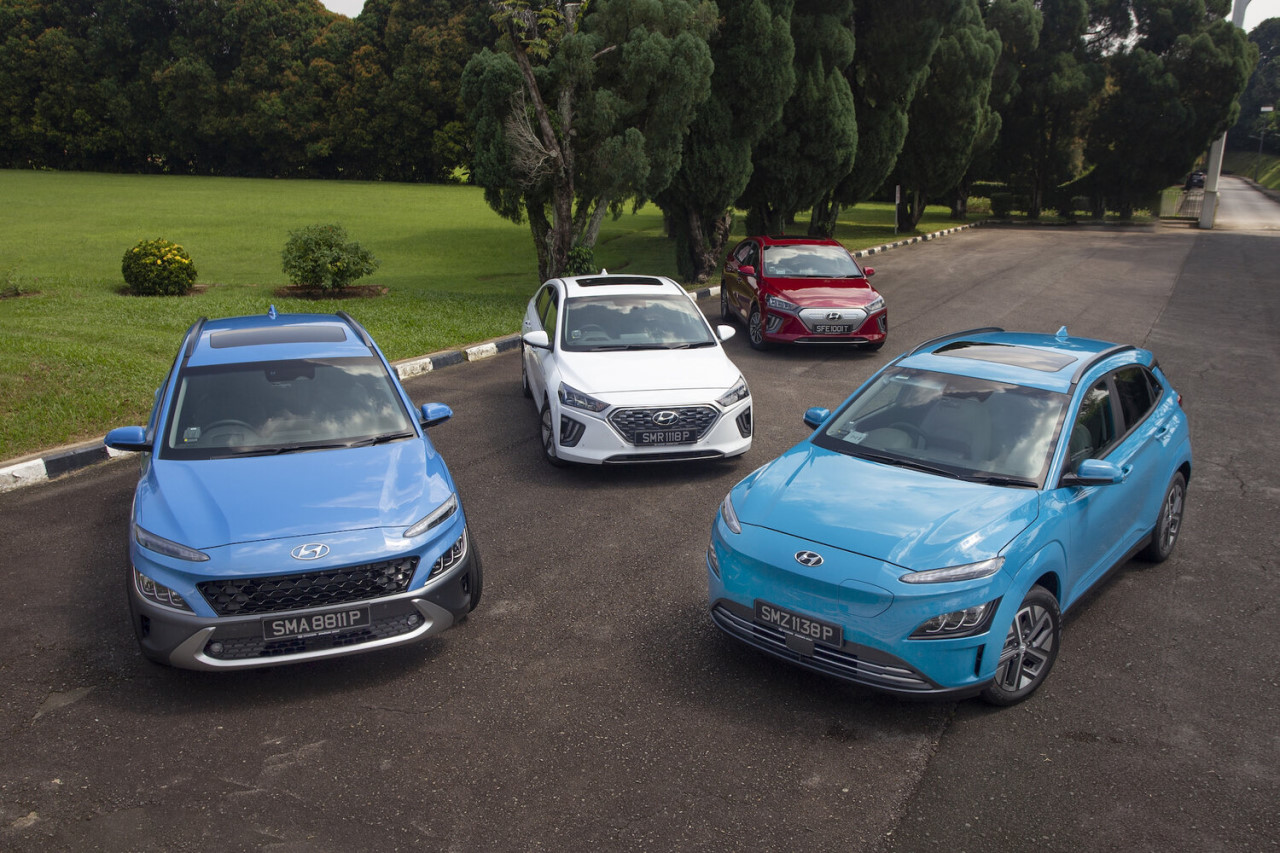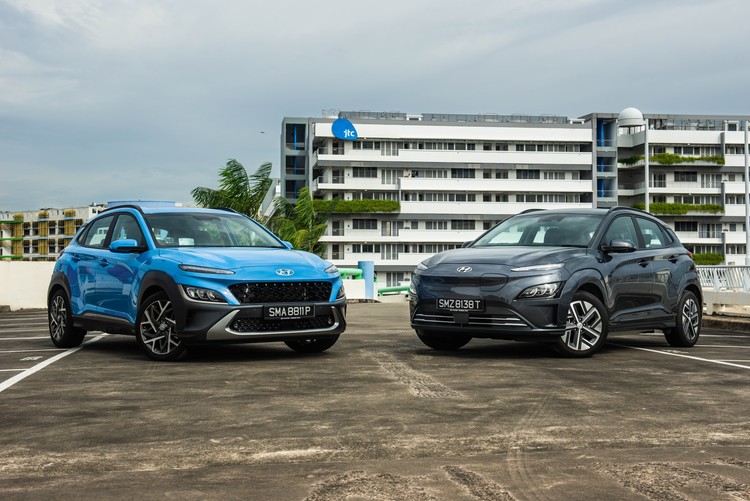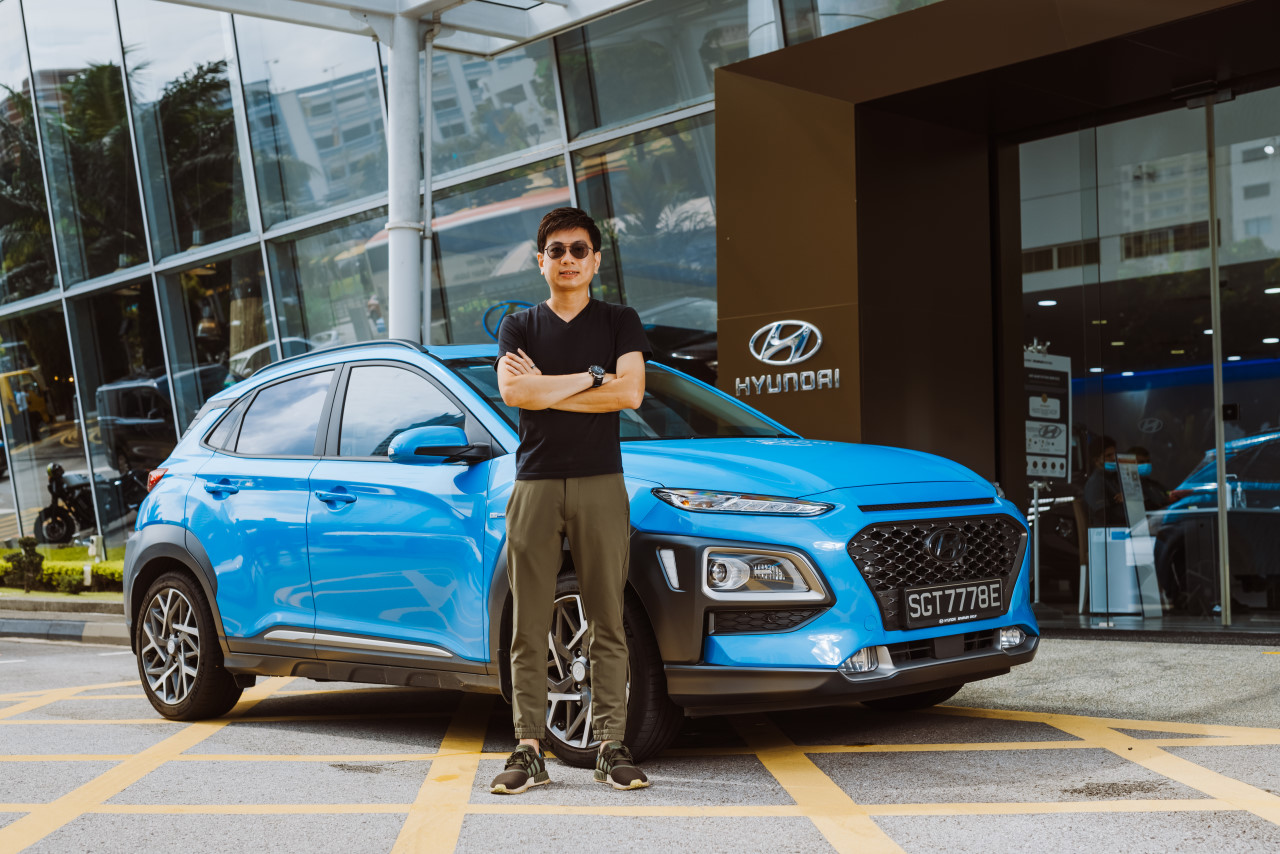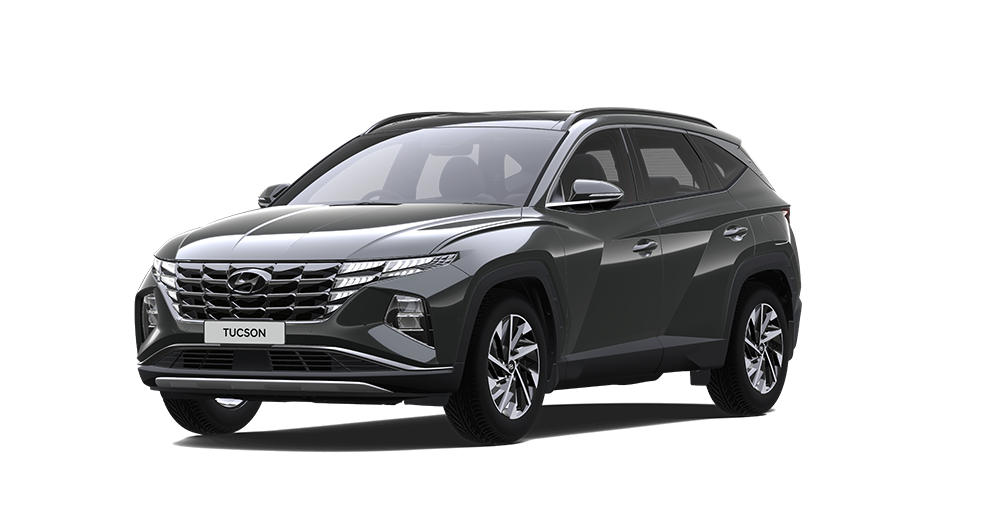The advantages of electrified motoring have been well-documented; silent and comfortable operation, fantastic acceleration and perhaps best of all, much lower running costs per kilometer than petrol.
In spite of these advantages, a pure Electric Vehicle (EV) may not be the ideal solution for some drivers. Driving patterns, lifestyle and even their accessibility to charging outlets are all factors that influence our requirements of which type of car we need.
So it’s a good thing then, that a car company like Hyundai offers a range of models that are either full-electric or petrol-electric hybrid powered.

EV or Hybrid?
Given its small size, Singapore is actually an ideal place for EVs. Short driving distances combined with the Land Transport Authority (LTA) announcement that by 2030, the Government targets for 60,000 EV charging points across the island. This means that EV charging points will be increasingly easy to find and becomes a more convenient proposition.
For most Singapore drivers, a Hyundai Kona Electric or Ioniq Electric is more than capable of meeting your daily driving needs with a range of up to 305 km and 311km respectively. Those looking for even more range will find it with the Hyundai Kona Electric Long Range that is capable of up to 484km between charges.
In any case, this represents a range that’s comparable to a similarly-sized car with a conventional Internal Combustion Engine (ICE) that runs on petrol. This also means that the driver of a Kona Electric or Ioniq Electric can go for days without needing to charge their EVs.
- • Access to an EV Charger at home or at work.
- • Public EV Chargers where you shop,dine, or run errands.
- • Electricity is less expensive than petrol.
Recharging is obviously a part of EV ownership and for this there are a few options. The simplest would be a charger installed at your home or where you work. If this is not possible, you’ll need to know where the EV charging points are at the places you might frequent. Here, you should be able to recharge your EV with a 50kW DC charger or 43kW AC charger while buying groceries, eating out or run an errand.
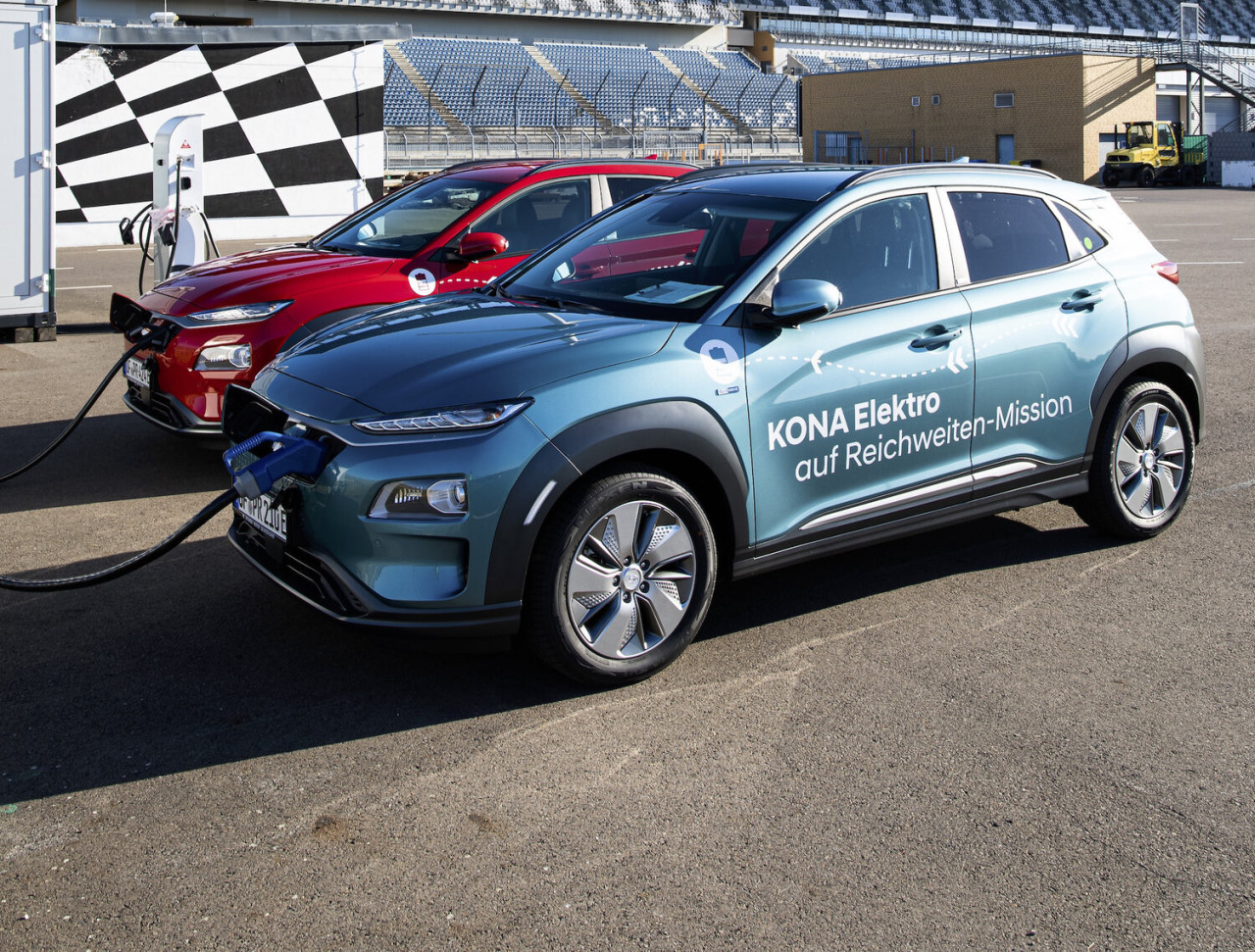
Public EV charging points usually offer 50kW DC or 43kW AC for fast-charging. There are also 100kW chargers in Singapore but are very few. Private chargers, like the ones installed in homes and some commercial buildings are usually capable of around 7kW or 11kW.
The higher the number, the faster the charge. However, not every EV is able to utilise the maximum charging speed available. Some EVs sold today can only accept slow charges of 7kW or less. This means that even if it is plugged into a 43kW charger, the car will not charge any quicker than if it were not plugged into a home charger.
Fortunately, Hyundai EVs can accept up to 100kW charging speed which means that the Kona Electric and Ioniq Electric can fully utilise the charging speeds from the most commonly available commercial chargers in Singapore.
Another strategy is for shorter, but more frequent charging by plugging in at every opportunity. Many shopping malls for example, encourage this with specially-reserved lots for EV charging that are closer to the entrances. This in fact, turns charging into a convenience rather than a hassle.
That said, there’s another group of drivers who for whom a petrol-electric hybrid option might be more suitable.
- • Hybrids as a stepping stone to EVs
- • Better suited for Long range drivers
- • More expensive to refuel than recharge
On one hand, cars such as the Kona Hybrid and Ioniq Hybrid may be an easier way for some drivers to transition from ICE to EV. Others however, might spend lots of time on the road or need the extra range. When the borders do open up again, some drivers may frequently take long distance trips to Malaysia or even beyond and might find a petrol-electric hybrid to be a more practical option.
Busy individuals may also not be willing to wait for their EVs to be recharged and so they may find it more convenient to fill up at a petrol station and get moving again in a few minutes.
That said however, this type of convenience comes at the cost of paying for petrol which costs more than the electricity tariff to charge an EV. There’s also an environmental impact. Hybrids, although extremely efficient compared to full ICE cars, still have a bigger carbon footprint than EVs.
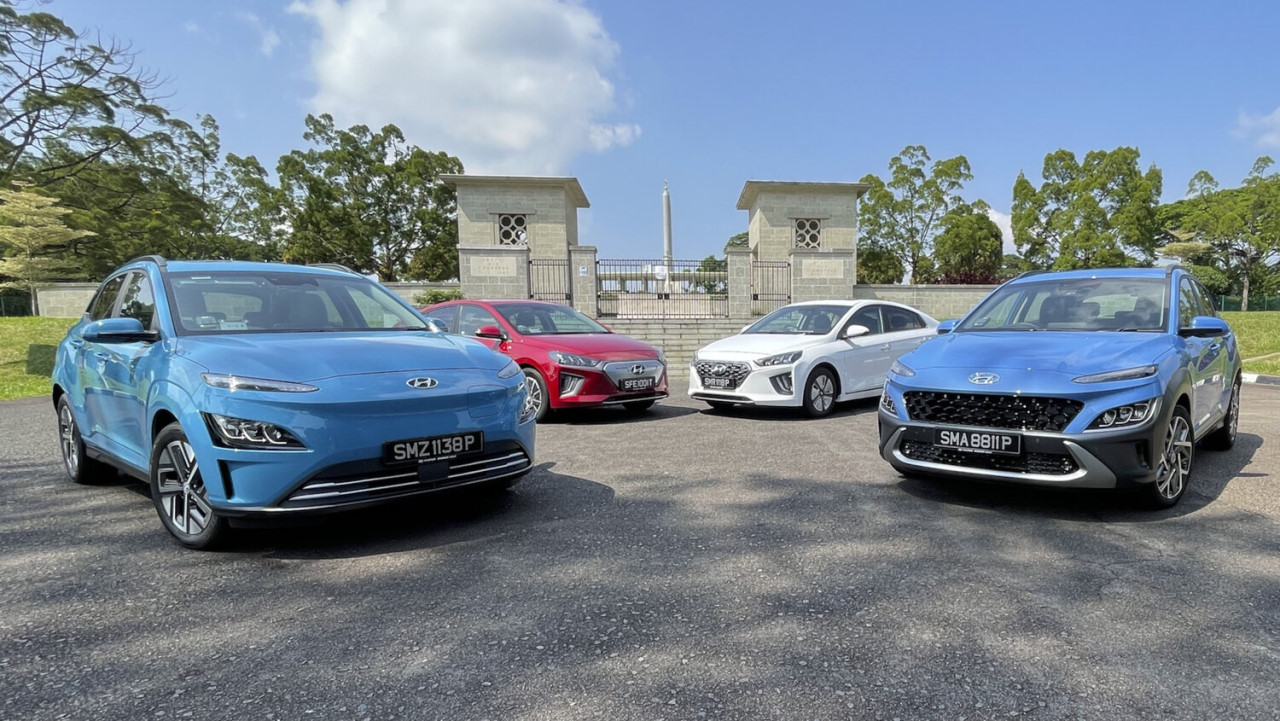
The New Generation: Hyundai KONA and Hyundai IONIQ
Whether your driving needs suit an EV or Hybrid, chances are you’ll find the ideal car in the form of either a Hyundai Kona or Hyundai Ioniq. Both model lines have recently been refreshed. The Kona range gets cleaner, smoother exterior styling which emphasizes the importance of aerodynamics to achieve the best energy efficiency.
This brings us to the vertical air inlets on either side of the front bumper to reduce turbulence from the front wheels. In between is a functional air inlet that is enhanced by a satin accent bar to give it a more pronounced stance. The new styling is complemented with new, sharper looking headlamps that incorporate Multi-Faceted Reflector (MFR) technology.
Similarly, the Hyundai Kona Hybrid models have been updated to give it a shapelier, yet rugged exterior design. This results in an overall length that is 40mm longer than the previous model, giving it a sleeker and more dynamic look that complements its wide, strong visual stance.

Inside, the Kona Hybrid has been subtly re-styled and now offers extra cargo room and rear passenger legroom for better accommodation and comfort.
The Hyundai Ioniq builds on a solid foundation of reliability and practicality. Yet, the recent styling updated keep this model looking fresh. The new headlamps for example, visually flow into the LED Daytime Running Lights (DRLs). Meanwhile, the Ioniq Hybrid now features a 3D effect front grille while the accent frame around it connects the headlamps to emphasize the width of the car.
At the rear, LED rear combination lamps give the car an unmistakeable light signature when it gets dark while the redesigned rear bumper give the Ioniq a sporty stance.
Together, these improvements help make the Hyundai Ioniq one of the most aerodynamically-efficient cars in its class with a drag coefficient of just 0.24.
Hyundai KONA 1.6 DCT Hybrid and 1.6 S/R Hybrid
The Hyundai Kona Hybrid promises a blend driving fun and efficiency. This comes by way of its 1.6-litre Dual CVVT engine combined with a 6-speed Dual-Clutch Transmission (DCT) with paddle shift that works in tandem with a 32kW (44hp) electric motor.

In the suspension department, the Hyundai Kona Hybrid models are also tuned for style as well as responsiveness with 16 and 18-inch wheel options for the standard and sunroof model respectively.
The Hyundai Kona Hybrid Sunroof (S/R) model takes sophistication to another level. Equipped with a Head-Up Display (HUD) function where, at a touch of a button, a reflective visor electrically rises into position to display speed and navigation directions exclusively to the driver’s line of sight.
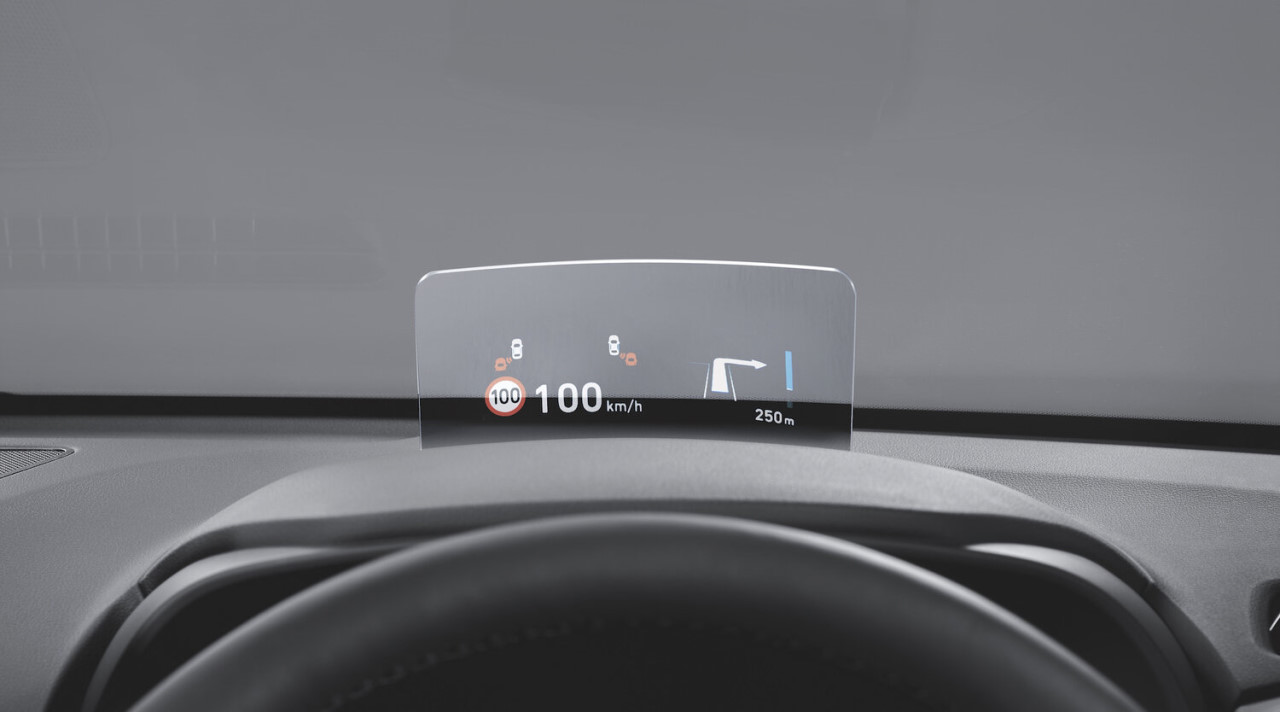
In addition to an electrically operable sunroof, the S/R model adds an extra layer of comfort with heated and ventilated front seats with powered adjustment.
Hyundai KONA 1.6 DCT HYBRID / 1.6 S/R HYBRID
Power: 131.4hp (system output), 1.6-litre 4-cylinder Dual CVVT with 32kW (43.5hp) electric motor
Torque: 265Nm
Battery: 1.56kWh Lithium-ion polymer
Range (est): (DCT) 974km, (S/R) 883km
Efficiency: (DCT) 3.9-litres per 100km, (S/R) 4.3-litres per 100km
VES banding: A2
Find out more about the new KONA Hybrid
Hyundai KONA Electric

The entry point of the Hyundai Kona EV range will already put many of its class competitors to shame with its features and performance. For starters, it features a 100kW (135hp) electric motor that makes 395Nm of instantaneous torque that gives it the impressive acceleration that EVs are renown for.
Inside the cabin, the Kona features a sleek and futuristic interior where an 8-inch touchscreen display takes centre stage. This is also where occupants will be able to wirelessly connect their smartphones to Apple CarPlay and Android Auto. This allows for effortless access to make handsfree phone calls, listen to their music playlists and navigate with apps such as Apple Maps, Google Maps or Waze among many other convenient features. Additionally, the driver has a 10.25-inch supervision cluster that offers four themes to choose from.
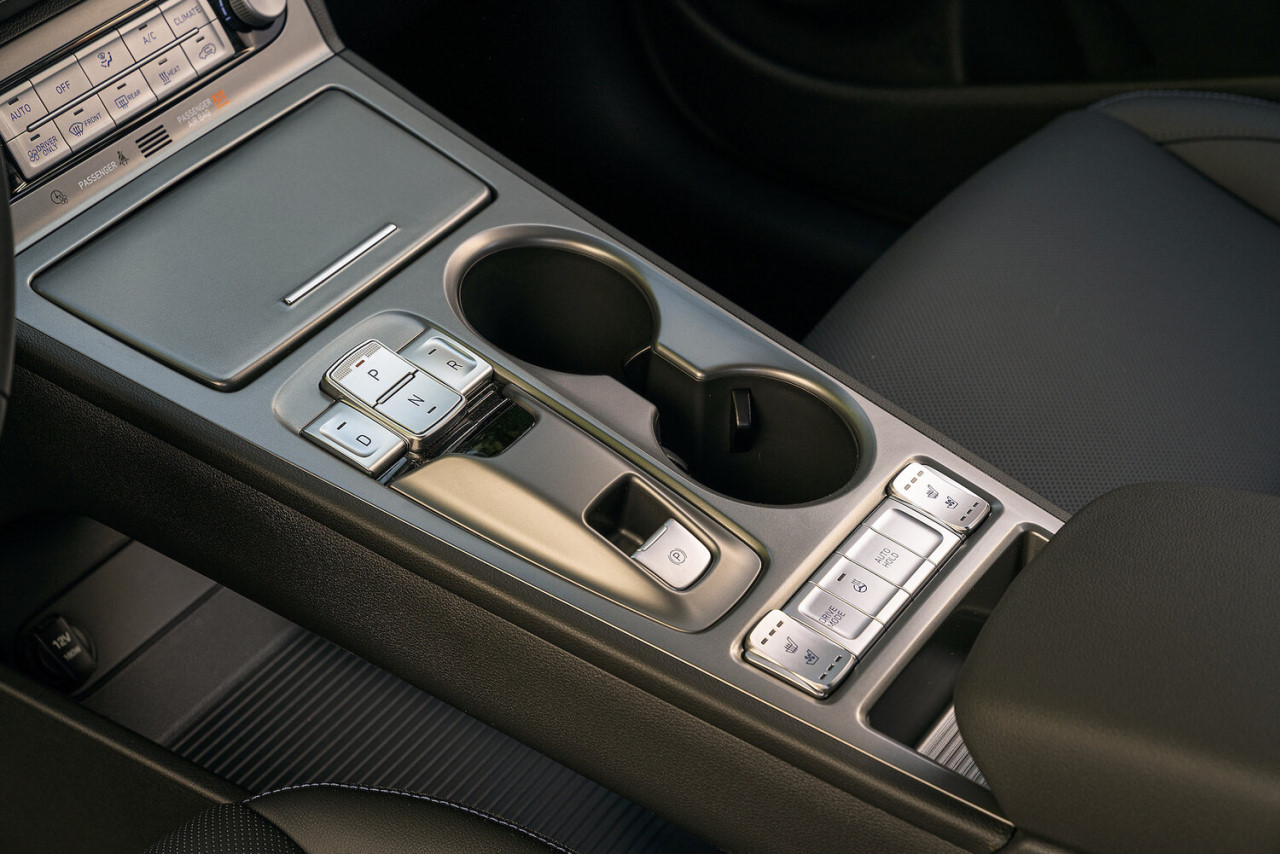
The advanced driving aids in the Hyundai Kona also set it apart it from the competition. Smart Cruise Control that works all the way to a complete stop is one such example. This, works in tandem with the Lane Keep Assist System that takes the hassle out of stop-start driving conditions.
Hyundai KONA Electric
Power: 100kW electric motor
Torque: 385Nm
Battery: 39.2kWh
Range: 305km
Efficiency: 15.0 kWh per 100km
VES banding: A1
Charging: (10% to 80%)
DC 50kW: 48min
DC 100kW: 47min
AC 7.2kW: 6h
AC 11kW: 4h 20min
Find out more about the new KONA Electric.
Hyundai KONA Electric Sunroof
In additional to all the features of the Hyundai Kona Electric, the Sunroof model adds a touch of class and luxury to an already impressive EV. In addition to the glass electric sunroof that makes for an airy driving ambience, some of the highlights also include factory-fitted leather seats. These are electrically-adjustable for the driver and front passenger. These seats are also heated and ventilated.
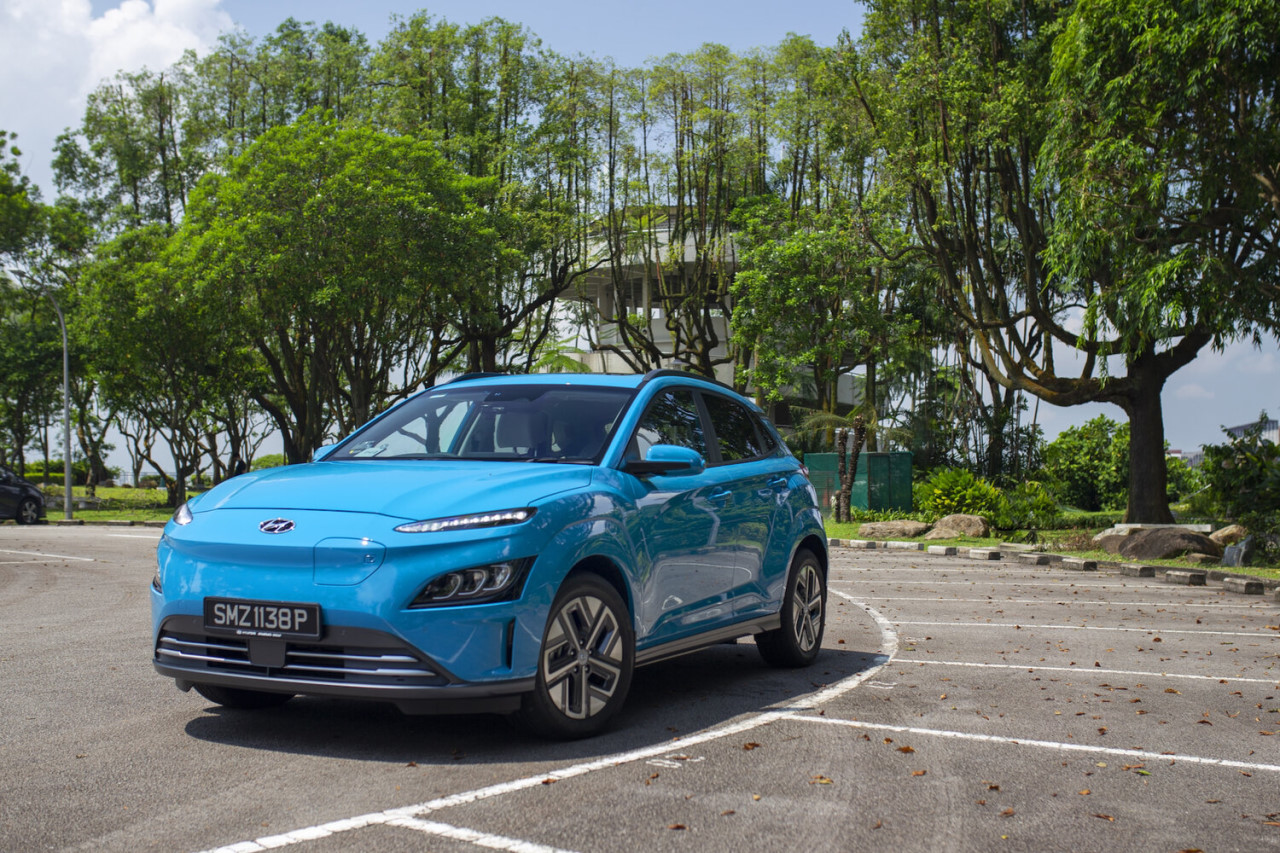
The convenience of wireless Apple CarPlay and Android Auto is enhanced with a built-in wireless charger for smartphones while there are also multiple USB charging points throughout the cabin so the other occupants can plug in their devices as well.
Hyundai KONA Electric Sunroof
Power: 100kW electric motor
Torque: 385Nm
Battery: 39.2kWh
Range: 305km
Efficiency: 15.0 kWh per 100km
VES banding: A1
Charging: (10% to 80%)
DC 50kW: 48min
DC 100kW: 47min
AC 7.2kW: 6h
AC 11kW: 4h 20min
Find out more about the new KONA Electric.
Hyundai IONIQ 1.6 DCT Hybrid / 1.6 S/R Hybrid
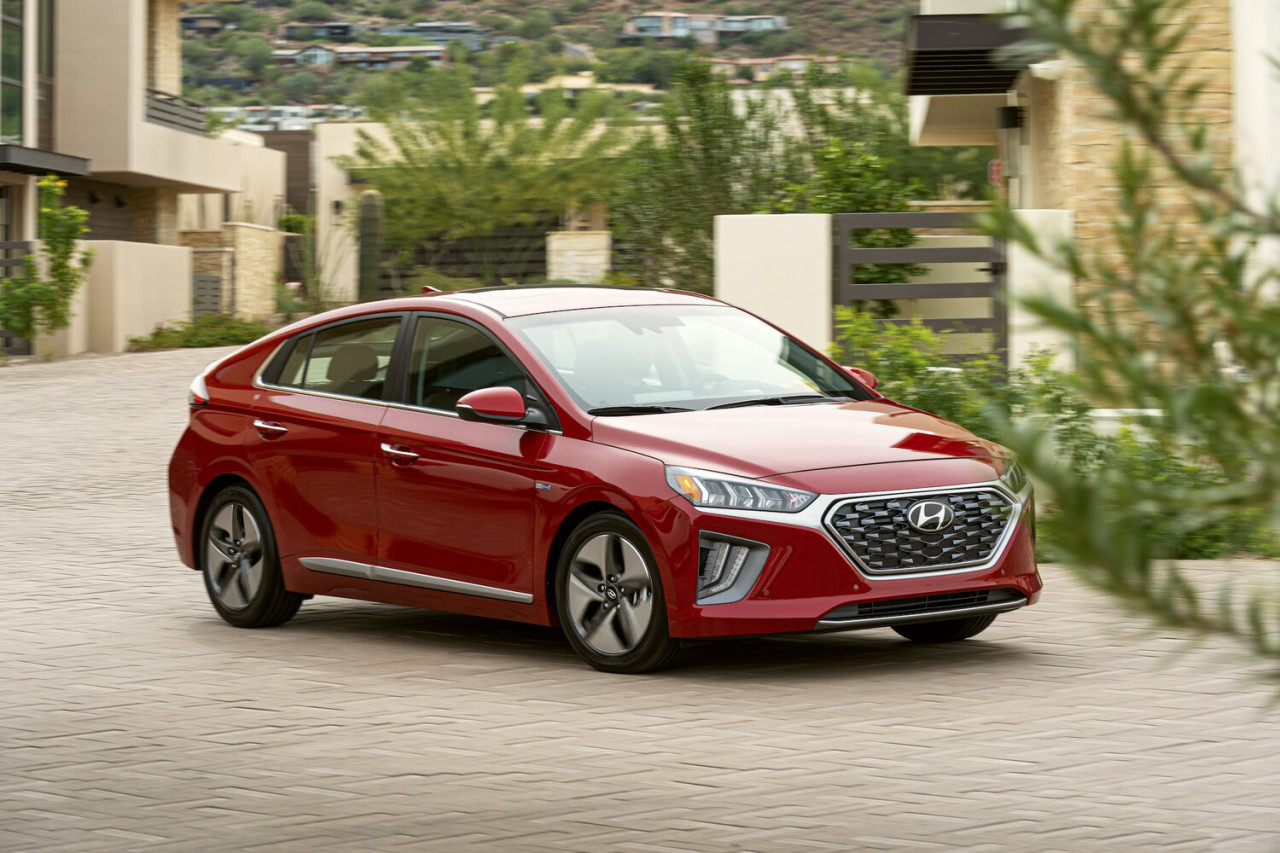
If you love really long road trips or have an extremely busy daily schedule where you can’t afford much downtime, then this is the car for you. The combination of 3.8-litre per 100km fuel consumption average with a 45-litre tank means that this car has theoretical range of 1,184km a tank of petrol. This amazing range comes by way of an efficient 1.6-litre engine that works in tandem with a electric motor to produce a combined output of 131.4hp (96.7kW).
As a petrol-electric hybrid, drivers of this Ioniq can enjoy some of the advantages of electrified motoring. Silent, vibration-free operation while stopped at the traffic lights or emissions-free driving under favorable conditions.
On the other hand, keener drivers will also appreciate the responsiveness and efficiency of the DCT transmission. For a more immersive drive, they can also use the paddle shifters behind the steering.
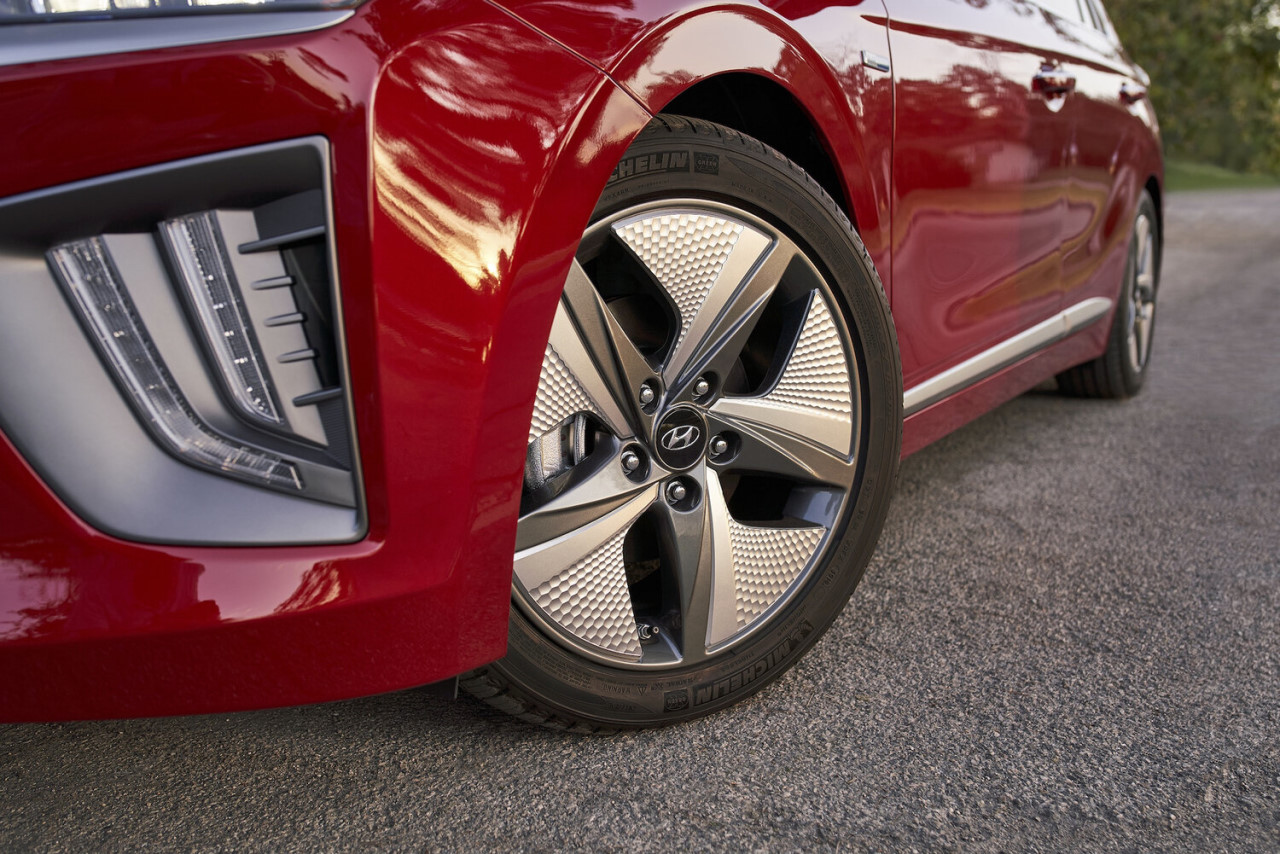
It seems you can have it all with the Hyundai Ioniq Hybrid. When it comes to safety and convenience features, this car doesn’t compromise either. Seven airbags, Smart Cruise Control with Stop & Go, Lane Keep Assist, Lane Following Assist, and a Park Assist System are just some of the safety features found in this car.
In the Convenience department, the Ioniq Hybrid is also chock-full of features to make driving as effortless as possible. Electrically-adjustable, heated and ventilated front seats, as well as Apple CarPlay and Android Auto connectivity along with wireless smartphone charging are just some of the highlights.
Hyundai IONIQ 1.6 DCT Hybrid / 1.6 S/R Hybrid
Power: 105hp, 1.6-litre 4-cylinder Dual CVVT with 32kW (43.5hp) electric motor
Torque: 265Nm at 1,500rpm
Battery: 1.56kWh Lithium-ion polymer
Range (est): 1,184km
Efficiency: 3.8-litres per 100km
VES banding: A2
Hyundai IONIQ Electric
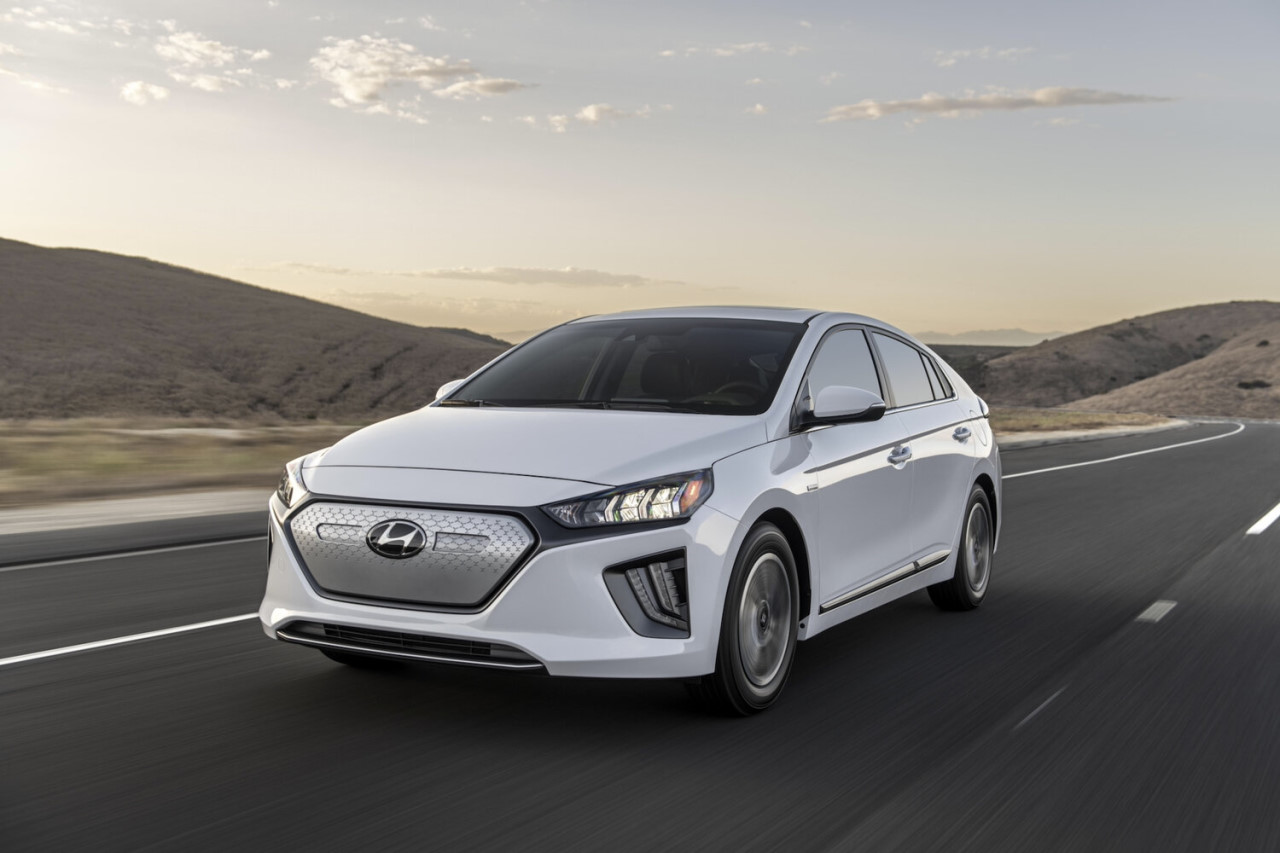
The world of emissions-free Hyundai EVs begins with the Ioniq Electric. A closer look however, reveals that there’s this car is anything but “entry-level”. This is in fact, a comprehensively-equipped EV with features such as seven airbags, Forward-Collision Avoidance Assist, Parking Assist System, Smart Cruise Control with Stop & Go, and Rear Cross Traffic Collision-Avoidance Warning, to name but a few.
The Hyundai Ioniq Electric also pampers its occupants with suite of comfort and convenience features. Apple CarPlay and Android Auto along with wireless smartphone charging, Bluetooth with voice recognition and electrically-operated heated and ventilated front seats are among the highlights.
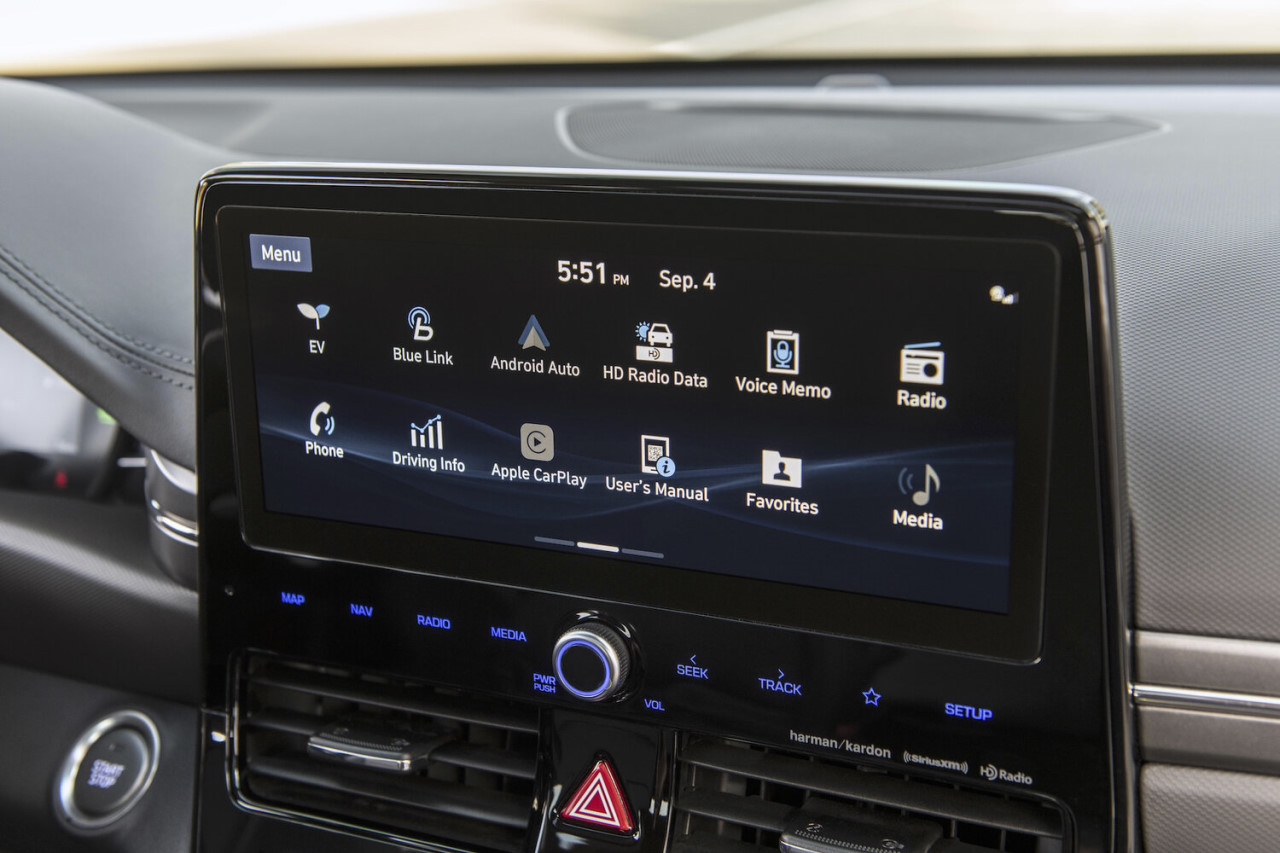
For everyday driving practicality, the Hyundai Ioniq Electric is capable of a 311km range between charges. The capability of receiving DC high-speed means that its drivers it won’t be long before they’re back on the road.
Hyundai IONIQ Electric / IONIQ Electric Sunroof
Power: 100kW electric motor
Torque: 295Nm
Battery: 38.3kWh
Range: 311km
Efficiency: 11.7 kWh per 100km
VES banding: A1
Charging: (10% to 80%)
DC 50kW: 57min
DC 100kW: 54min
AC 7.2kW: 6h 5min
Coming Attractions: Hyundai TUCSON Hybrid & Hyundai SANTA FE Hybrid
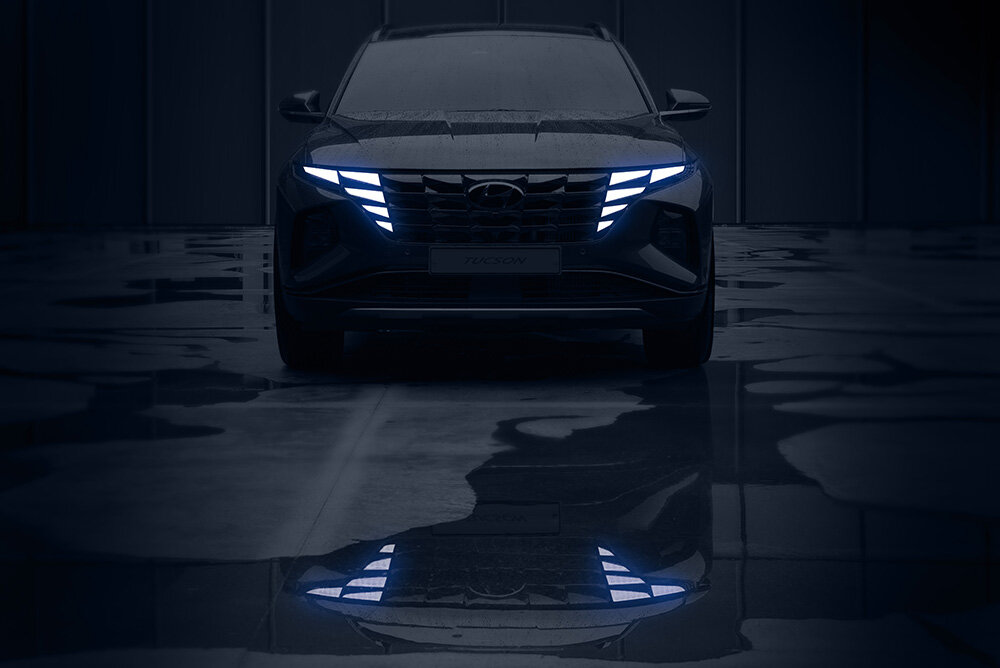
The range of electrified vehicles form the Korean brand is set to grow with these up-coming models that offer more space, luxury and practicality. Here’s a sneak peek of what we can look forward to.
Hyundai TUCSON Hybrid
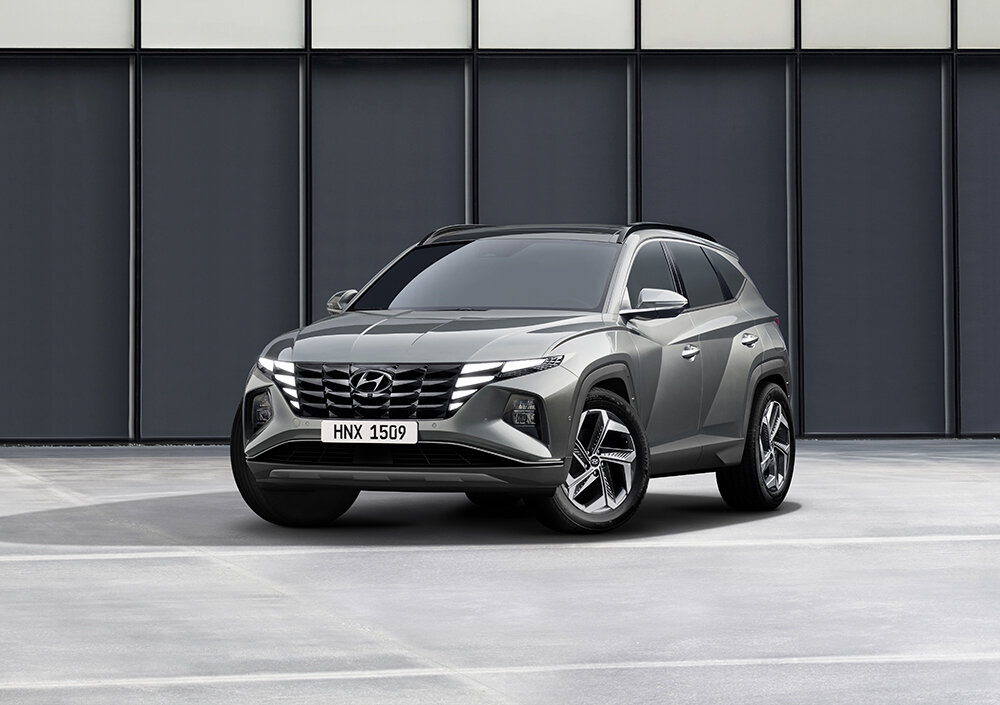
The Tucson is Hyundai’s best-selling model globally with more than 7 million units sold since the first generation model was launched in 2004. The latest, the generation fourth-generation Tucson may have grown in size and capability, but it has also become much more efficient and luxurious.
Although the 1.6-litre turbocharged model has recently gone on sale, the Hyundai Tucson Hybrid is set to go on sale later this year. It will feature a powerful 230hp petrol-electric drivetrain. A 44.2kW electric motor is paired with a 180hp 1.6-litre turbocharged T-GDI engine that features the world’s first Continuously Variable Valve Duration (CVVD) technology. In a nutshell, CVVD optimises engine performance and fuel efficiency. The technology regulates the timing of the valve opening and closing according to how the car is driven. It is the only system that can change the duration of the valve opening during a ride, depending on conditions.

The driver will also be able to adjust the ride quality thanks to the new Electronic Controlled Suspension’s (ECS) adaptive damping technology. This system automatically and continuously controls the vehicle’s suspension to maximise driving comfort and performance. It achieves this by taking into account driving conditions such as speed, road surfaces, cornering, stopping requirements and acceleration. By controlling the damping force on each individual wheel, ECS reduces roll, pitch and vertical motion to enhance ride and handling. When choosing the Sport mode, all-new Tucson drivers can enjoy an extra level of responsiveness and control.
Hyundai Tucson Hybrid
Power: 230hp (combined), 1,598cc turbocharged CVVD with 44.2kW (60hp) electric motor
Torque: 350Nm at 1,500-4,500rpm
Battery: 1.49kWh Lithium-ion polymer
Find out more about the all-new TUCSON Hybrid.
Hyundai Santa Fe Hybrid

Those who looking for even more space in an electrified SUV will find it in the new Santa Fe Hybrid. Hyundai labels this new drivetrain Smartstream 1.6-liter, direct-injected, turbocharged four-cylinder engine coupled with a specially-tuned six-speed automatic transmission. Together with a 44.2kW electric motor, the Santa Fe Hybrid will Abe able to make a combined output of 230hp.
As with the Tucson Hybrid, the Santa Fe Hybrid will also come with a suite of safety features known as SmartSense Advanced Driver Assistance Systems (ADAS). The combination of sensors and systems combine to warn the driver of a potential collision. Meanwhile, other ADAS systems can help the driver perform certain tasks using the SUV’s multiple array of sensors, and cameras.
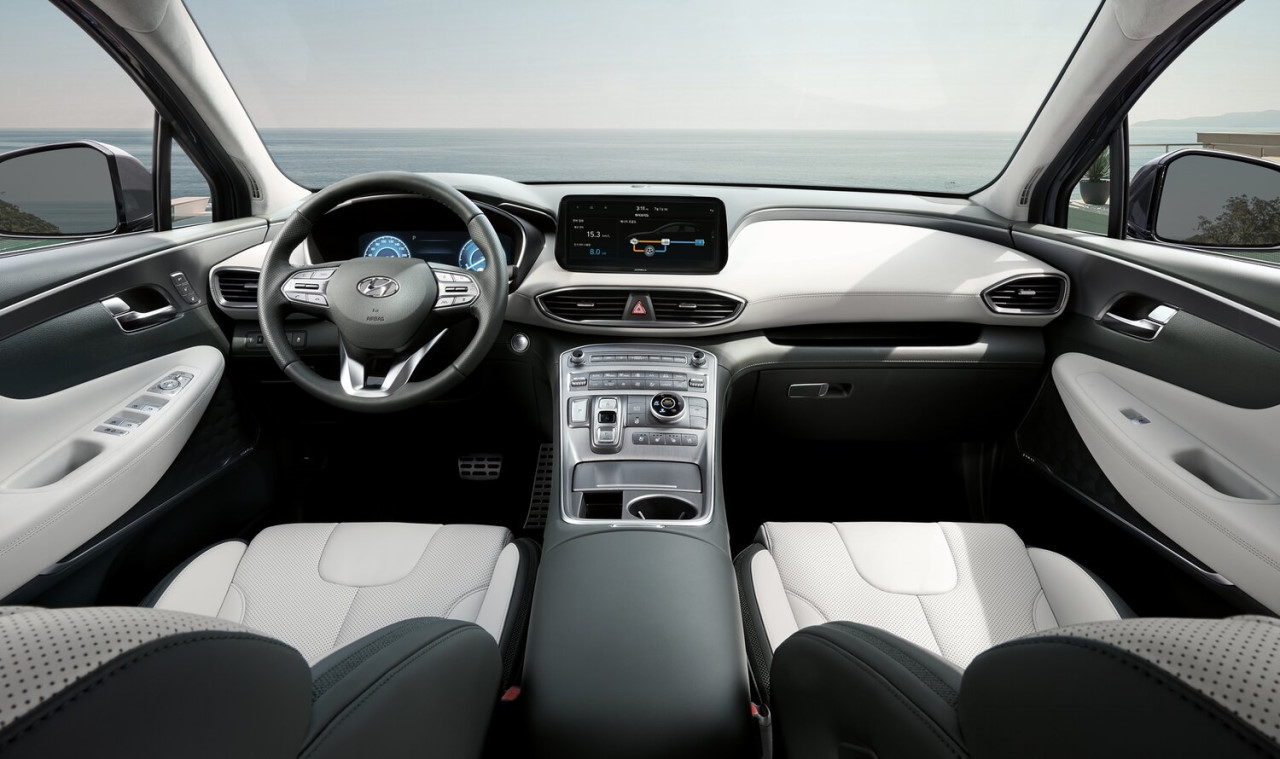
Hyundai SANTA FE Hybrid
Power: 230hp (combined), 1,598cc turbocharged CVVD with 44.2kW (60hp) electric motor
Torque: 350Nm at 1,500-4,500rpm
Battery: 1.49kWh Lithium-ion polymer
